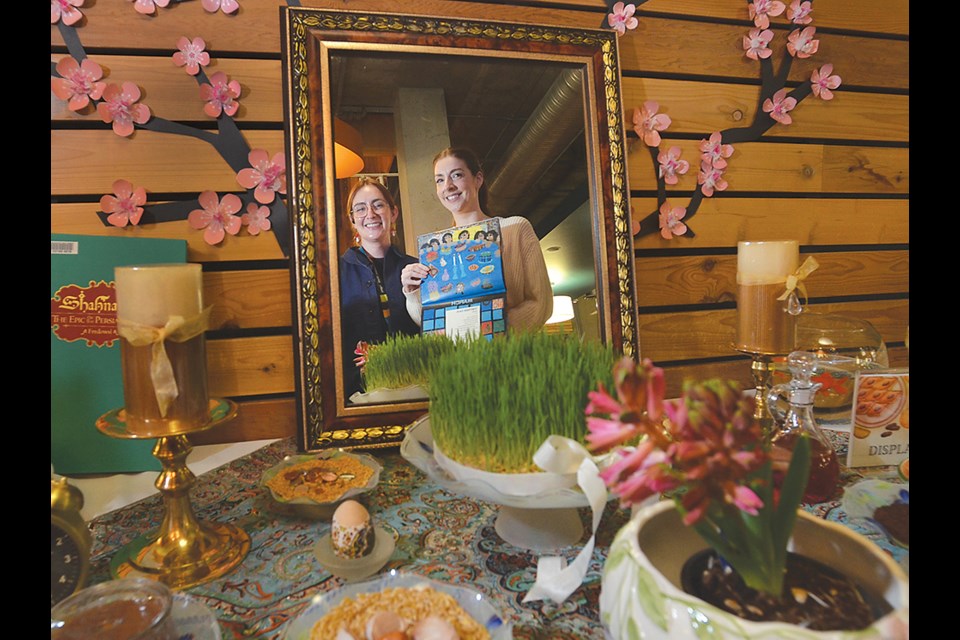This week marks the arrival of spring’s vernal equinox and the welcoming of the new year for Iranians. Nowruz, meaning new year, is an ancient Zoroastrian festival that spans 13 days and comprises numerous events, festivities and celebrations.
The official date and time of the Persian festival varies each year, but a number of core traditions are always observed, especially that of the haft-seen arrangement, which the annual event is centred around.
A few days prior to the New Year, a traditional table setting, named a haft-seen spread or haft-seen table, is arranged, and it remains up for the following 13 days of festivities.
In Farsi, haft-seen translates to "seven s’s," and the table is an arrangement of seven symbolic items whose names start with the 15th letter in the Persian alphabet. While the spreads themselves can vary from elaborate displays with unique additions and beautiful ornate features to small and simple tables, the seven core items are their one commonality.
The seven comprise; Sabzeh, wheat, barley, mung bean, or lentil sprouts grown in a dish; Samanu, a sweet pudding dish; Senjed, fruit from a lotus tree; Serkeh, vinegar; Seeb, an apple; Seer, garlic; and Somaq, sumac. All of the items are laid upon a special cloth, named a sofreh.
“We are basically saying that we are putting seven elements of nature together in a spread on a table to celebrate the reconnecting with nature after the long winter period,” explains City of North Vancouver councillor, and the first Iranian-born Canadian elected to government in B.C., Shervin Shahriari.
Shahriari explains how each of these elements are symbolic of wider meaning, like the apple, which symbolizes youth and beauty, or the garlic, which represents health and medicine.
“The Somaq symbolizes the sunrise, or the triumph of good over evil. The vinegar symbolizes age or patience, and then there is oleaster, which is the dried fruit of a lotus tree, and that symbolizes love.”
Shahriari said the Sabzeh, often in the form of green sprouted wheat on a plate, represents productivity and rebirth, while the Samanu, a sweet, dark-hued pudding made from wheat germ, symbolizes affluence or strength.
Nassreen Filsoof, president of the Canadian Iranian Foundation, said while the seven core spread items are the same on all haft-seen tables, they can “differ in style,” and often do.
“A lot of the time they are similar but with minor differences,” she says.
“I might put one flower while someone else might put another flower, or I might put a red apple while someone else will put a green one. Some people have a singular tealight and others have lots of candlesticks,” she said.
Oftentimes families opt to include their own personal offerings, like the flowers – a universally winsome representation of the season’s change. Many people choose to place a mirror on the table as representation of self-reflection and self-awareness, while some place a clock to represent the passing of time, and others may stack books upon the sofreh as their nod to wisdom and learning.
In some cases a bowl containing a goldfish features, as a symbol of life. Although it is a tradition that has wavered in recent years, with some homes swapping the fishy option for a fruity one, an orange, as a more animal-friendly alternative. Typically, the goldfish are released into the wild on the 13th and final day of the festival, often resulting in their demise.
Persian chef Poyan Danesh likens the tradition of the haft-seen table to that of the Christmas tree, every family has their own spin on it, but the premise remains the same.
“It is unique for each family. Some special pieces, like bowls, mirrors and candle holders, have been passed down from generation to generation, and including them is a wonderful way of having your loved ones present during these celebrations,” he said.
“Our families go through many different stages of designs and styles. My wife takes great pride in designing and having our haft-seen ready for pictures and guests that visit.”
Danesh said Nowruz is an exciting time of the year, “when the weather warms up, the sun shines bright and the house is filled with sweet smells of flowers and sweets.”
For those wanting to see a table locally, all three North Shore libraries and the Museum of North Vancouver will be housing their own displays.
Mina Kerr-Lazenby is the North Shore News’ Indigenous and civic affairs reporter. This reporting beat is made possible by the Local Journalism Initiative.



